Ahoy, squirts! Quint here to wrap up this week-long celebration of Indiana Jones and the Temple of Doom with a very funny in-depth interview I conducted with the film's screenwriters Willard Huyck and Gloria Katz.
It's not a huge shocker that Huyck and Katz ended up with writing duties on the Raiders sequel. They go back a long time with George Lucas, having written American Graffiti and famously doing an uncredited polish on Star Wars, but one of the joys of this interview was finding out how closely tied their early career was tied to Spielberg's as well. Wait until you read about their first proposed project with Steven...
The two very graciously entertained many nerdy Temple of Doom questions and I'm really pyched for you guys to read this article. It's a little long, but much like their Indiana Jones movie it is jam packed with awesome and moves like a runaway train.
Don't skim this one, squirts. You'll regret it.
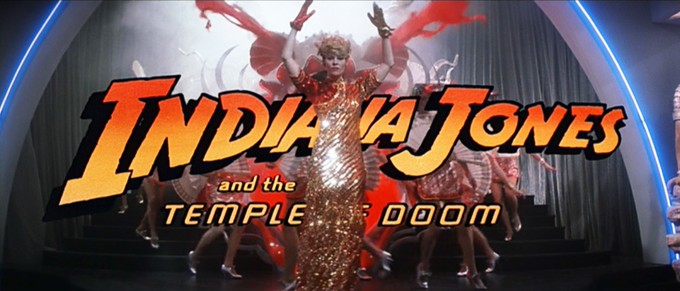
Quint: Let's start at the beginning. What brought you on board the sequel? I know you guys had a history with George Lucas. Did that help land you the gig to do the followup to Raiders of the Lost Ark?
Willard Huyck: We actually had a history with both George and Steve. We knew Steve, I guess, from the time he was doing whatever that thing was with Joan Crawford at Universal. We were at the same agency. We had worked with Steven very early. At one point he asked us to write a little book he had picked up at the checkout stand at a book store. It was called Flushed With Pride and it was the story of Thomas Crapper who supposedly invented the flush toilet... (laughs) He said, “You really should do a short treatment, then we'll get a deal.”
So, we wrote a short treatment about Thomas Crapper...
Gloria Katz: We sort of made it like Little Big Man. (laughs)

Willard Huyck: We gave it to him, he said “This is really cool, I'm going to give it to my agent.” Then we didn't hear from him for weeks. We called and said, “Steven, what happened to Thomas Crapper?” He said, “Oh... my agent told me that if this was the kind of film I want to make he doesn't want to represent me.”
That was one. Our second big deal with Steven was he called us and said he wanted to have lunch. We went to have lunch with him and he said “I want to do a movie about what would really happen if a spaceship landed on La Cienega,” where we were eating. We didn't really love the idea much so he went on to... I don't know, who wrote Close Encounters?
Quint: He did!
Willard Huyck: Was Paul Schrader involved?
Gloria Katz: I think Steve re-wrote him.
Willard Huyck: Anyway, we knew Steven forever, so when we heard they were going to do a sequel we thought it was a cool idea.
Gloria Katz: I think George knew we collected East Indian paintings and he knew we knew a lot about India. It was a big enthusiasm of ours. That might have had something to do with it.
Willard Huyck: Although, at one point when we were writing it we told George “We know a lot of Indians. We've been there... I don't think they're going to think this is really so cool. Do you think you're going to have trouble shooting there?” He said, “Are you kidding? It's me and Steve.” Months later they called and said, “We can't shoot in India. They're really upset.” So they shot in Sri Lanka and London, mostly.
It was a dream project for us, for a number of reasons. One, we didn't have to come up with the main idea and we had the main character. Two, it was unbelievable working with them at that point. There was no studio involved. We flew up to San Rafael and met with George and Steven, sat around for a couple of days and just talked.
They had one or two sequences left over from the first Indiana Jones. The sequence where the raft goes flying out of the plane and down the hill...
Quint: And the mine cart sequence as well, right?
Willard Huyck: Yes, they wanted to do a mine cart sequence as well, but they had no idea how to fit any of these things in. We talked about Gunga Din a lot and then we just had fun. It was interesting working with them because George was very interested in the story, like “Okay, guys. What happens next?” and Steve would be drawing and having ideas that would sometimes fit and sometimes wouldn't, necessarily. He was thinking about it much more visually.
Gloria Katz: The thing that was very interesting about the project is that Steve was coming off an enormously successful movie and George didn't want to lose him. He desperately wanted him to direct (Temple of Doom). We were under a lot of pressure to do it really, really fast so we could hold on to Steve.
Willard Huyck: George kept saying, “If you don't do this really fast, he's going to go off and do another movie.” In those days doing sequels was really looked down upon. It wasn't something directors would normally do. They'd let somebody else come in and do the others. So, we wrote it very fast and Steve loved it.
Quint: That's interesting. When I talked to Steven a couple years ago about Jaws he said he now regretted turning down Jaws 2 because he felt like he lost ownership over the franchise, but at the time he just wanted to move onto the next thing. I guess George was worried he'd do the same thing with Indy.
Willard Huyck: You reminded me of something. We had another major “almost” collaboration with Steve. After American Graffiti, we wrote a movie called Lucky Lady for Fox.
Gloria Katz: Well, Fox bought it.
Willard Huyck: Yeah, Fox bought it. It was a huge spec sale, although the producer who gave us nominal money took most of the money, but anyway... We were looking for a director. We told the producer “You've got to see this movie Sugarland Express.” They looked at it and Fox was interested in having Steven do it, so we took it to him. He said, “I really love this,” but then he called back later and said, “I can't do it because I have this commitment to make this shark movie...” He said, “I'd like to do it, but I can't get out of the other thing.”
Gloria Katz: That was film history. Bad for us, good for you!
Willard Huyck: Another thing... they gave the script to Harrison right after we finished it. Steve called us and asked, “Have you heard from Harrison?” I said, “No, I think he'd probably call you first.” Steve said, “Well, he hasn't called me. I'm really worried.” I said, “Why?” He said, “For one thing, he can make my life really miserable on the set if he's mean to me.”
Gloria Katz: We kept saying, “But you're Steve Spielberg!”
Willard Huyck: (laughs) He was worried if Harrison didn't like it he'd be mean to him. We finally got the call that Harrison wanted to meet with us, so we went over and the meeting started out with him saying, “This is really cool. There's some really great stuff and some really funny stuff in it.” We started going through the script and the first scene we got to was a scene with Short Round, named after our dog, by the way, who was named after the kid in Steel Helmet.
Anyway, we got to the end of the scene and he said, “This one line bothers me. The kid's supposed to be 10, I don't know if he'd say something like this.” We said, “Yeah, but he's a real cocky kid. That's the whole take on him throughout the film. He's wise-cracking with Americanisms and so forth.” He said, “I don't know... It's a great line. I think it's probably something that Indy would say.” We said, “Oh, okay.”
We kept going along and whenever we'd get to Short Round's lines and he really liked them and he kept saying “Do you think Short Round would say that or do you think Indy would say that?” (laughs)
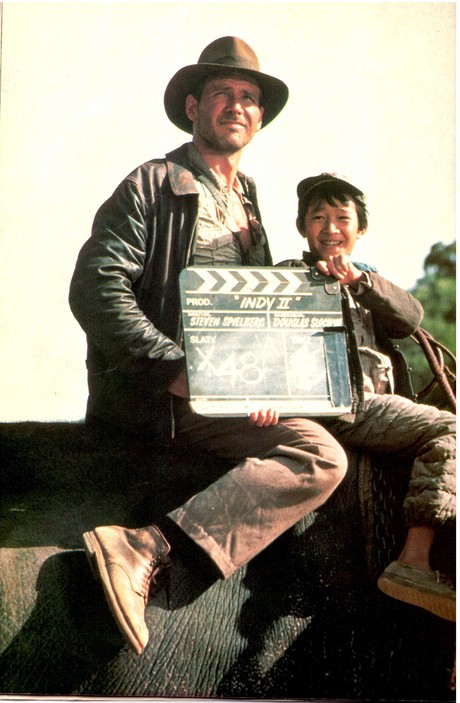
Quint: He was poaching all the good lines!
Willard Huyck: He's poaching all these 10 year old kid's lines from the script. Steve saw how the meeting was going and said, “Listen, I'm going to go watch this...” Roots was on or some famous television show and he said “I'm going to go watch this while you guys go through the script.” He realized that in effect what we were doing was giving all the kid's lines to Indy.
The other thing, aside from us predicting they might have trouble shooting in India, was when it was finished, you know it sort of invented the...
Gloria Katz: PG-13.
Willard Huyck: We were getting calls. This time it was Michael Eisner (then head of Paramount) calling. He said, “I'm really worried. Could you guys talk to Steven for us because he's not listening to us. It's really violent...”
Gloria Katz: People get so fussy about the pulling out of the heart and other such wonderful things.
Willard Huyck: Monkey brains.
Gloria Katz: And monkey brains. I just never understood the puritanical streak that runs through the reviews of this film.
Quint: I've gone back and read a lot of that stuff and it is shocking how hyperbolic the negative reviews went. Harlan Ellison wrote this amazingly vitriolic essay where he takes down Steven for producing Gremlins and directing Temple of Doom in the same year. He said that he's destroying the childhoods of a whole generation with these dark movies. I read that and thought to myself, “Dude, you saw Raiders of the Lost Ark, right? People's faces melt off!” It's kind of established in that world that things can turn dark.
Listen, I understand the tone is darker in Temple. Visually and story-wise it's darker. Mola Ram is a much more intimidating bad guy than Belloq. I get it, but I don't understand why the people down on the movie take it up to 11 when talking about it.
Willard Huyck: You know, what's funny is the one person who sort of took the opposite tact was Pauline Kael. She loved the darkness and said, “This is like The Godfather II, which was darker than Godfather 1.”
You mentioned Mola Ram. Mola Ram was a very famous 17th Century Indian painter. We used several names of Indian painters in the film. When Pauline Kael reviewed it she said “Obviously Steven is having fun with the name Mola Ram, which is an anagram for Mallomar,” which was Steven's favorite candy.
Gloria Katz: What was she talking about?!? (laughs)
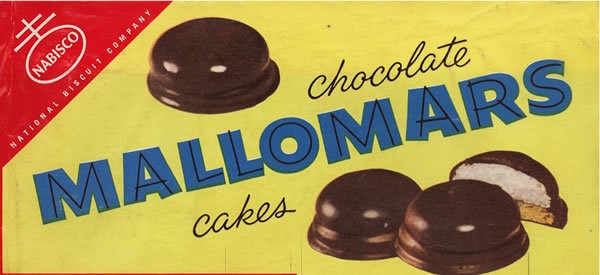
Quint: She thought she had stumbled onto something!
Willard Huyck: Yeah, she thought she figured out a clue or something. You obviously know about the dogs. George had a dog named Indiana and Steven had a dog named Willie and we had a dog named Short Round.
Gloria Katz: That's how the names happened.
Willard Huyck: One day we were walking our dog, Short Round... we were living in Echo Park and we realized we really were in Movie City because another dog was walking along and they started attacking each other. I was shouting “Short Round! Short Round!” and the other guy was shouting “Dodes'ka-den!” which is a Kurosawa movie.
Quint: So you had Sam Fuller going against Akira Kurosawa. Not a bad fight.
Willard Huyck: (laughs) Right.
Gloria Katz: I think the important thing about Temple of Doom was that George wanted to have new villains. That's why we created the Indian villains. I guess because of bad PR they went back to the Nazis on number three.
Willard Huyck: It's very hard for the whole series to come up with villains without seeming racist, which actually some Indians have mentioned to us. Africa was a problem... So, the Germans were handy.
Quint: Nazis are the perfect bad guys. You can do whatever you want to them and show them in whatever light and nobody's ever going to complain.
Willard Huyck: The other thing about it being dark is when Steven attacks a project... I mean, when he does the Holocaust it's really the Holocaust. It was that way. He saw it as a horror film. He really wanted it to be scary and that's what he did.
Gloria Katz: Also, the nice thing about Steven is whatever you think up, Steven has no fear. What we noticed is that he's a tremendously efficient director that does everything with a minimum of drama. Other directors that we've worked with... it would have taken them the rest of their lives to shoot that film.
Willard Huyck: Steven knows exactly what he wants. If an Art Director overbuilds the set, he'll say, “I told you I was only going to shoot this way. You didn't have to build the other side.” He loves shooting. That's another difference. George sort of finds the making of a movie traumatic and he loves post-production. Steven just loves shooting movies.
Gloria Katz: In terms of working with them, as Willard said it was screenwriter dream time. I mean, we've worked on projects where you sit around a table and there's 25 people and you all have raise your hands to get to an agreement and nothing is ever going to turn out right. (Steven and George) just let you do your own thing. It was just a great experience.
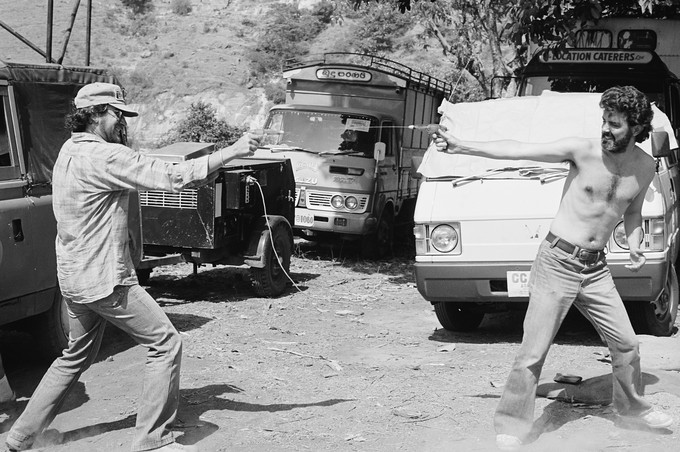
Quint: You mentioned a lot of elements were in place when you guys came onboard. One of the reasons I love the movie so much is that it feels like every creative decision goes the opposite way you'd expect from a sequel to Raiders of the Lost Ark. Instead of a smooth-talking French archeologist you have a big, colorful villain. Willie is the exact opposite of Marion. Indy himself is a much different man, I guess because it's a prequel. He's much more of a fortune and glory guy. He's not there to put relics in a museum just yet.
Willard Huyck: What's happened is that commercially people have learned to just do the same thing again because “that's what people loved and we made a lot of money so let's just do it.” But they were really consciously trying to do a different kind of movie than the first one.
Gloria Katz: We were only given two elements to work with. They weren't written elements, they were just ideas, but in our discussions we wanted to make Willie more of a Judy Holliday type of character. We got radically criticized that she wasn't like Marion, but Indy is also totally different and nobody ever seems to pick up on that. It's exactly as Willard said. People just wanted same old same old. When we broke from that pattern they were uncomfortable.
Quint: The fact that it's not trying to be Raiders of the Lost Ark is the reason I love it so much and also the reason I think a lot of people are coming around to it now. I was a kid when Temple of Doom came out and almost to the person when I talk to someone in my generation they'll say that they've watched Temple of Doom more than any other Indy film. They could still think Raiders is a better movie, but almost every single person I talk to says they have gone back to Temple of Doom the most of any Indiana Jones film.
Willard Huyck: I've heard that.
Quint: I really like Last Crusade, but it feels like a lesser version of Raiders. Temple of Doom is completely its own unique thing, so I don't feel like I have to compare it Raiders like I find myself doing with Last Crusade.
Willard Huyck: It was fun for us, too, because of the Indian aspect. We eventually put together this world class collection of Indian paintings. The wall portraits (as seen in the movie), we had seen in India and the idea that they would come alive, that they seemed to come out of the walls... It's such a colorful place.
Gloria Katz: We had all these photographs of actual Thuggees and how the Thuggees worked. We also collected photographs from that period. It gave us something rich to work with. I think Steven always has felt uncomfortable about the picture because everybody got beat up pretty badly in the reviews, which I guess makes it lose points in the overall scheme.
Quint: I talked to Harrison Ford once about Temple of Doom and he had a lot of positive things to say about the movie. I asked him why Spielberg talks down on the movie so much and he said that specifically child advocate groups got upset at the movie and that more than anything else Steven took to heart. Speaking as someone who was a child when he saw the movie... all these adults were trying to protect us from this film, but me and all my friends thought it was the coolest movie ever.
Willard Huyck: He's so interested in kids. He's such a great director and so forth, but he sort of missed that kids love that kind of stuff. Anyway. I can't believe it's been 30 years!
Gloria Katz: That's the crazy part. We were really disappointed because I was pregnant at the time and we so wanted to go on location. More than anything. Then I had the baby and we thought, “Schlepping her to Sri Lanka is probably not the best thing for her.”
Quint: That was a very inopportune time to bring a human being into this world. What were you thinking?
Willard Huyck: It was great when we were writing, but it wasn't so hot later.
Gloria Katz: We finished the script and 10 minutes later I went into labor. I remember Willard frantically printing out the script because we had to get it to Steven.
Willard Huyck: In those days you didn't email a .PDF.
Quint: (laughs) That's amazing. I'd never heard that before. That's real dedication on your part, Gloria. You waited until you were finished writing.
Gloria Katz: That's right.
Willard Huyck: We should have named our daughter Short Round!
Quint: I'd like to talk a little about the decision to make the movie a prequel. Was that something that you guys wanted to do or was that decided by George and Steven?
Willard Huyck: I'm trying to remember...
Gloria Katz: As I remember, George wanted to...
Willard Huyck: I think the decision had been made. They weren't ready yet, and later they had a problem with getting into the '50s. They were enamored by serials and going forward made it harder and they decided to go backwards and do a prequel.
Quint: The fact that the Indiana Jones of Temple of Doom is not the Indiana Jones of Raiders is one of my favorite aspects of the movie. He is much closer to the guy that Marion talks about knowing in Raiders. He's more reckless... There's a point in the movie where we see the Indiana Jones of Raiders being born. After he wakes up from the Black Sleep of Kali he has the stones, he could have easily made off with the people he loves and his fortune and glory to boot, but he doesn't. He goes back for the kids. Whenever the mine cart light illuminates him in the tunnels it's showing us Indiana Jones as we know and love him.
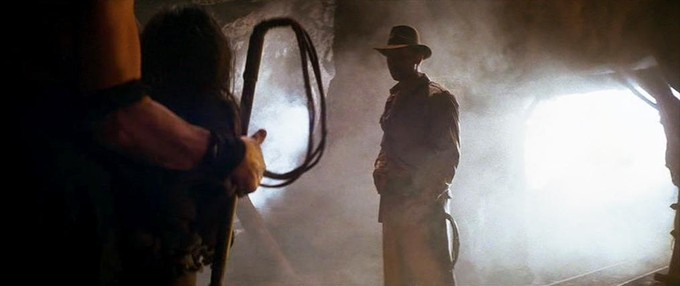
Willard Huyck: He grew up, yeah. The thing about the first one that's so odd... When we first saw it, we said, “George, are you implying that he raped this girl?” What was she? 13 or something? It was so weird!
Quint: I can see you guys having a lot more to play with having Indy acting more selfishly, more brash. But at the same time you have some restraints because of the fact that it's a prequel. You can't make the Sankara Stones too supernaturally powered or it wouldn't make any sense why he's surprised by the supernatural stuff in Raiders. Was that something you guys thought about while writing?
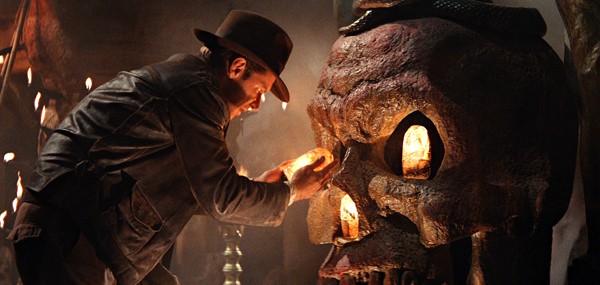
Willard Huyck: Yeah. The other thing we faced was what he was fighting in the first one was so big.
Gloria Katz: The fate of the world.
Willard Huyck: The Nazis getting their hands on this thing meant world domination. What was it going to be like if it wasn't something that big? We talked about that a lot. What was the ultimate consequence of Indy failing in the second one? Well, you have kids working in mines. It wasn't quite as Earth-shattering, so we tried include the idea that the stones could lead to even worse things in the future because they had powers like the ark.
Quint: When you consider the movie within the context of the series it's really fascinating. The MacGuffin in Raiders is all about the power of a vengeful God. That's the ark's power. Yet in Temple of Doom, if Mola Ram isn't full of shit when he's giving his big speech, then having all the Sankara Stones together would let Kali come in and wipe out all the other Gods.
Willard Huyck: You're right. It's a predictive kind of thing. Oh my God, if they get it you'd have a lot of crazy Hindus!
Quint: Was there much that you guys toyed around with in early drafts of the script that didn't make the final film?
Willard Huyck: I don't think so because the whole thing was done so fast. I don't think our first draft was that long. It didn't go through the process where we ended up with 180 pages.
Gloria Katz: The scripts that we wrote, and I forget how many drafts there were, but not that many, ended up really almost all on the screen. There were certain improvs that Steve told us about, that he would try that were eventually abandoned in the movie. In terms of writers, we were really happy with the movie because it was so close to what we wrote.
Quint: So you didn't show up to the premiere and go, “What the hell did you do to our baby!?!”
Willard Huyck: No, not at all.
Quint: I read an early draft and one thing that intrigued me was that there was an implication that Mola Ram was himself under the influence of the potion. People under the influence of the blood had glowing yellow eyes in the script and when they're awoken their eyes go back to normal. When Mola Ram is burned by the Sankara Stone in the final fight, the script says his yellow eyes go back to normal... just in time for him to fall to his death and get eaten by crocodiles. In the movie as it is they pretty much make all the evil emanate from Mola Ram, but was there ever a thought to who turned Mola Ram?
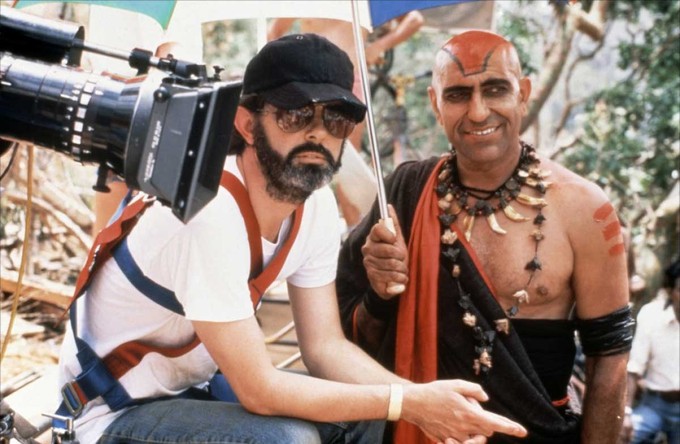
Willard Huyck: No. We'd have to do a Mola Ram prequel.
Quint: I would be so up for that, you have no idea!
Willard Huyck: How about young Mola Ram? (laughs)
Quint: Yeah, the Young Mola Ram Chronicles!
Gloria Katz: We did do something else in the script where we weren't in the mines so long. We cut outside.
Willard Huyck: We were worried about being in the mines too long, so we went back up, but I think eventually that was cut out. So once they went down the whole ending is in the mines.
Gloria Katz: That was our greatest concern.
Quint: The movie is so well paced. I know Steven deserves a lot of credit for how he shot it and Michael Kahn deserves a lot of credit for how he cut it and, of course, John Williams' amazing score really propels it, but the template was set by you guys. Once they find the passage in Willie's room the whole second half of the movie is just rocketing towards the credits.
Willard Huyck: Yeah, I think that's what people liked about it, too. It's really a rollercoaster.
Quint: Was that relentless pace something you guys had to think about or was it something that developed naturally as you were telling the story? Since you wrote it so fast, it would make sense to me that some of that energy translated into the pacing of the film.
Willard Huyck: I think that was it. It's a story that is based on “what happens next?” There's some interludes where the characters sort of have fun with each other, some little dialogue things, but it was always “what happens next?” George is very much like that. He's amazing as an editor because he'll say “Wait a minute, this is the second time you used that shot. Why do you need it twice?”
Gloria Katz: But it is very tightly constructed, that's true.
Quint: It is. Did you guys intend an alcoholism allegory or am I reading too much into the movie like Pauline Kael and her Mallomar conspiracy?
Willard Huyck: You think?
Quint: Well, Indy drinks something and turns into a different person, to the point that he smacks his quasi-adopted son.
Willard Huyck: I hadn't thought of that. So, Indy becomes a Friend of Bill. (laughs) The other great thing about the movie is that when they came to do the Indiana Jones ride at Disneyland they called us to write dialogue. We said, “Sure! This is cool!” So we ended up writing dialogue. It was a big thing and we went down and what they ended up needing were things like “Not that way!” Anybody in the world could have written that dialogue, but the great thing is we got invited and my daughter could ride on the ride as much as she wanted.
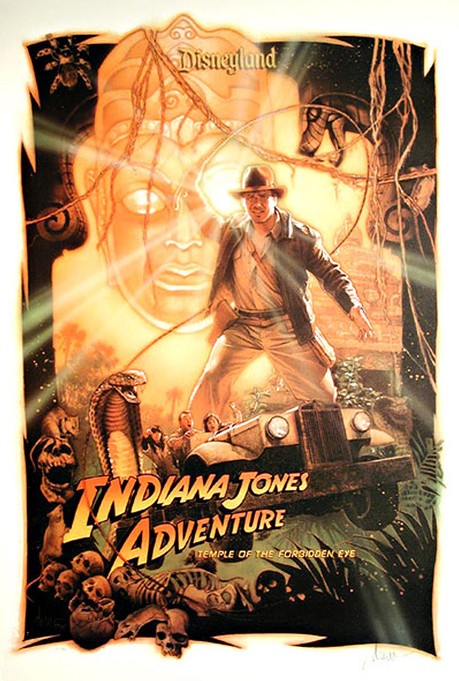
Quint: I've been on that ride many times.
Willard Huyck: We also worked on the stunt show at the Florida Disney Park, so my daughter got to go there, too!
Quint: “Tourists. Why'd it have to be tourists.”
Willard Huyck: Exactly! One of the world's great lines!
Quint: I know Temple of Doom got beat up a little bit critically, but it was still a huge financial success. Did you guys have a hope that you'd be invited back to the third Indy adventure?
Willard Huyck: We were quite happy with the results of what we did.
Gloria Katz: Also we were busy.
Willard Huyck: Yeah, we went off to do our own thing again.
Quint: Speaking of, I also unapologetically and unironically love Howard the Duck, so thank you both very much for that.
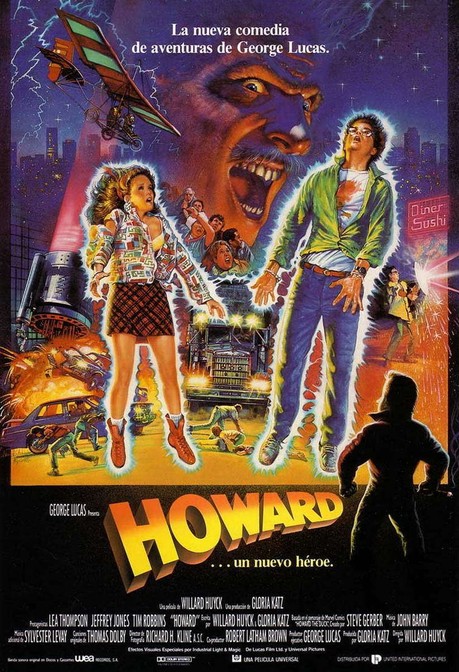
Gloria Katz: Obviously you have great taste. (laughs)
Willard Huyck: Now if you said you loved Messiah of Evil... (laughs)
Quint: At this past Sundance I was stopped on the street and asked to take a photo of a girl with a celebrity, who happened to be Lea Thompson. It took all of my willpower not to tell her how much I love her in Howard the Duck and what her character meant to an adolescent boy at that time.
Willard Huyck: (laughs) I ran into Katie Capshaw and Lea Thompson somewhere, sometime, and they looked at me said, “Oh, look. It's the man who ruined our careers!” (laughs)
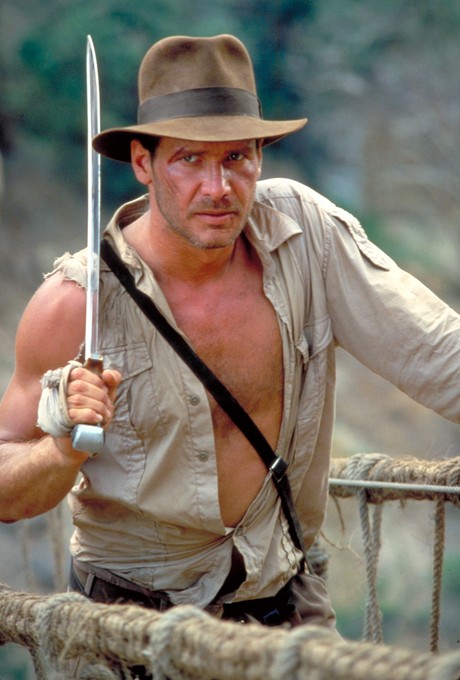
That wraps up the big Fortune and Glory series. I'll run one more article that collects links to all the ToD content from this last week, but it's a wrap in terms of content.
A big thanks to Willard and Gloria for being such good interview subjects and to you guys for putting up with my blathering on about this crazy film I love for the last week. Hope you guys got a kick out of it all.
-Eric Vespe
”Quint”
quint@aintitcool.com
Follow Me On Twitter

